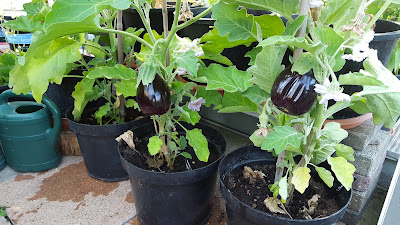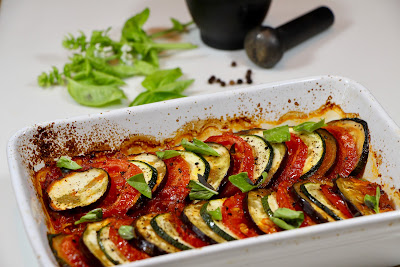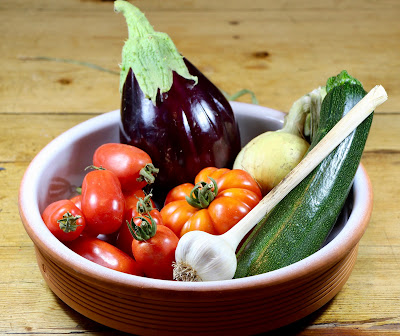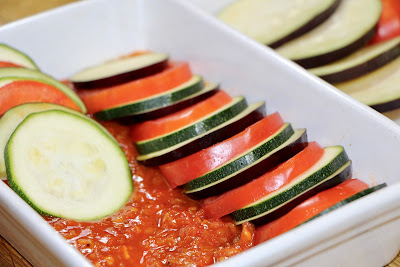Allotment Ratatouille
Aubergine:
Not everyone’s favourite vegetable, I can tell you that. Why not?! I hear you ask. The answer, given by a lot of my extended family as well as friends is “it tastes of nothing”.
Growing your own, may persuade you otherwise. A vegetable seed that sometime can take up to 21days to germinate here in UK. As well as needing a long growing season, best started very early in the year. This year, I started mine in January, only because in previous years, starting this seed variety in March (remembering how long it takes to germinate), always found fruit to appear around mid August into September, by then the weather is cooling down and daylight hours start lessening, therefore the harvest season is very short.
 |
| Black Beauty |
By starting seeds in January, it has helped extend the harvest season by at least a month. Harvesting the 2 Aubergines in the picture, I noticed 2 more flowers have been successful been pollinated and fruit has started to set.
These are hunger plants, once the flowers start to appear, give an alternate weekly feed of comfrey feed and organic liquid seaweed, this not only helps the plant but also produce a good harvest.
Always give plants ‘airy positions’ even in the green house, or they can get prone to white fly and aphid attack, if planted or kept to close together. But the one to watch out for is the Black Spider Mite.
Should this be the case, it indicates the greenhouse conditions are too dry. Keep the plants moist by spraying them with water. I do not spray the plants with water as we have hard water in our area, white marks are left on the leaves, but rather spray water on the greenhouse floor, liberally. It may look odd, watering the floor, sometimes twice a day (on really hot days) but it does help maintain the moisture in the air of the greenhouse.
With this first harvest of Aubergine, so early in July, I thought I will make a classic dish, Ratatouille, using all homegrown vegetables and herbs. No Bell Peppers used in this recipe, they are still green at this stage in the season.
Here’s what I used:
1 Aubergine; 1 medium sized Courgette; Quarter of an onion, diced; Tomatoes for both sauce as well as layers; 1 clove of crushed garlic; pinch of chilli flakes; pinch of turmeric; pinch of mixed dried herbs; 2 to 3 tbsp of Olive Oil; fresh basil leaves
and salt and pepper to taste.
Make the sauce first by adding the onions to a hot pan with a little olive oil, sauté for a minute or two, add garlic, dried herbs and chilli flakes, and a couple of freshly chopped plum tomatoes.
Allow to cook for no more than 10 minutes. Spread the mixture in an oven proof dish.
Do not rush this part of the process; slice the Aubergine, Courgette and Beef steak Tomato evenly (this helps the vegetables cook evenly in the oven). Start layering the vegetables on the bed of tomato sauce in the dish, keeping to the same order as the first 3 slices you started with.
Make sure they are placed in a slant position, with majority of the slices near enough upright. Once layers are nice and compact add salt and pepper to taste, before placing aluminium foil and baking at 180˙C for 40 to 50 minutes. Remove foil, turn up heat to 200˙C for bake for a further 10 minutes.
Remove from the oven, drizzle with olive oil and torn fresh Basil leaves.
Makes a great accompaniment for a grilled Sea Bream fish together with crusty Bread.
But it tastes even better served cold the next day as an Hors d’oeuvre.





